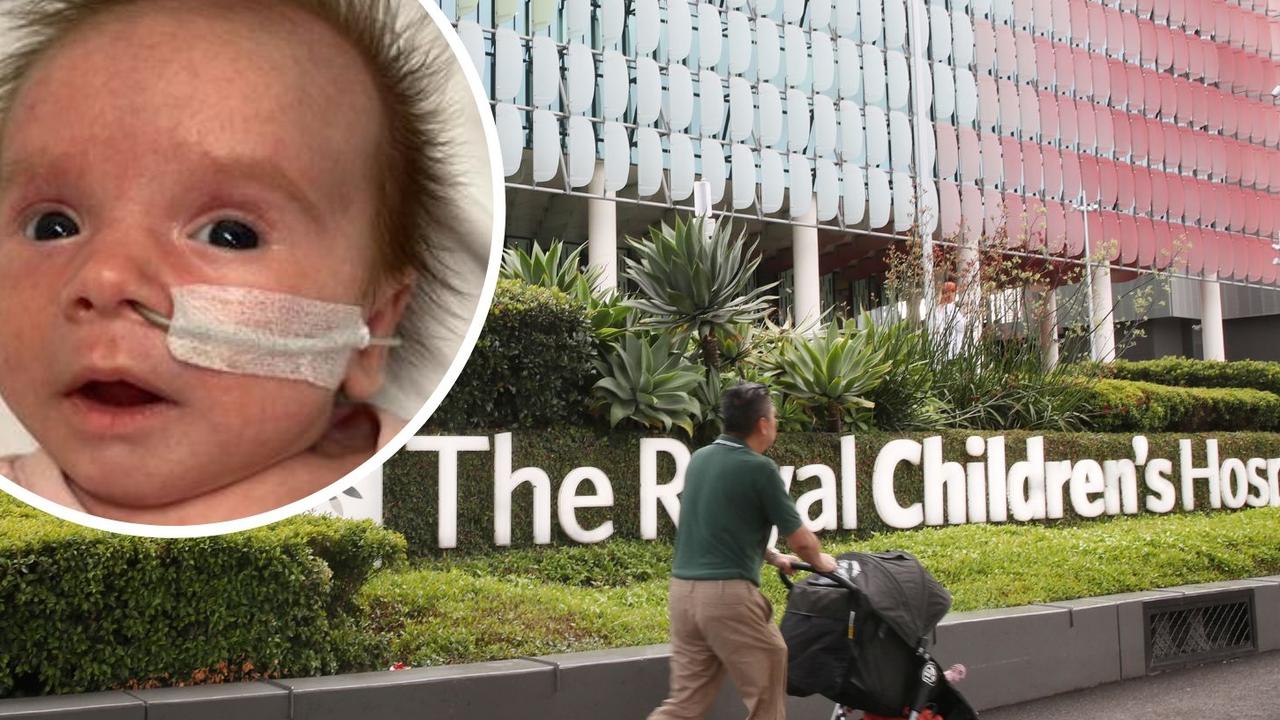SA farmers facing unprecedented challenges are calling on the state government for help
Farmers want the government to acknowledge the unprecedented challenges the $18.5bn industry is facing from frost, virus, low rainfall and feed shortages.

SA News
Don't miss out on the headlines from SA News. Followed categories will be added to My News.
It’s a tough gig being a primary producer in South Australia at the moment.
Tomato growers were in the news last week, after the largest producer in the southern hemisphere at Two Wells was shut down to stop the spread of a highly contagious virus.
Dairy farmers also featured in the news as the Beston Global Food Company was placed into administration, owing milk producers millions in payments.
While a lack of rain and recent frost is devastating livestock farmers, grain growers and viticulturists across the state.
Keith farmer Miles Hannemann and his wife are offloading stock for “pretty terrible prices” as the cost of fodder increases and availability becomes scarce.
“We’ve sold 50 per cent of our calves, which we’d normally sell in four to five months time, but we’re selling them now,” Mr Hannemann says.
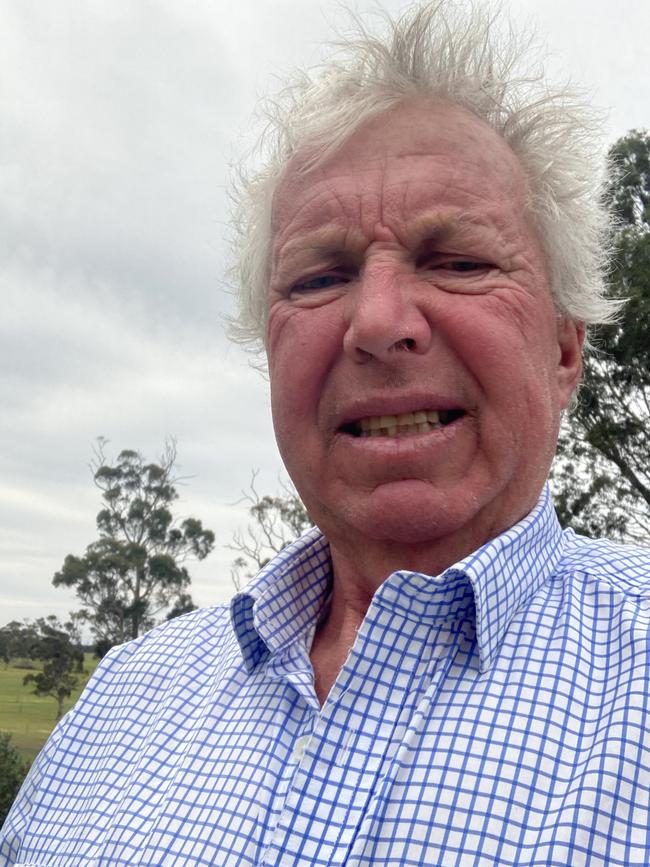
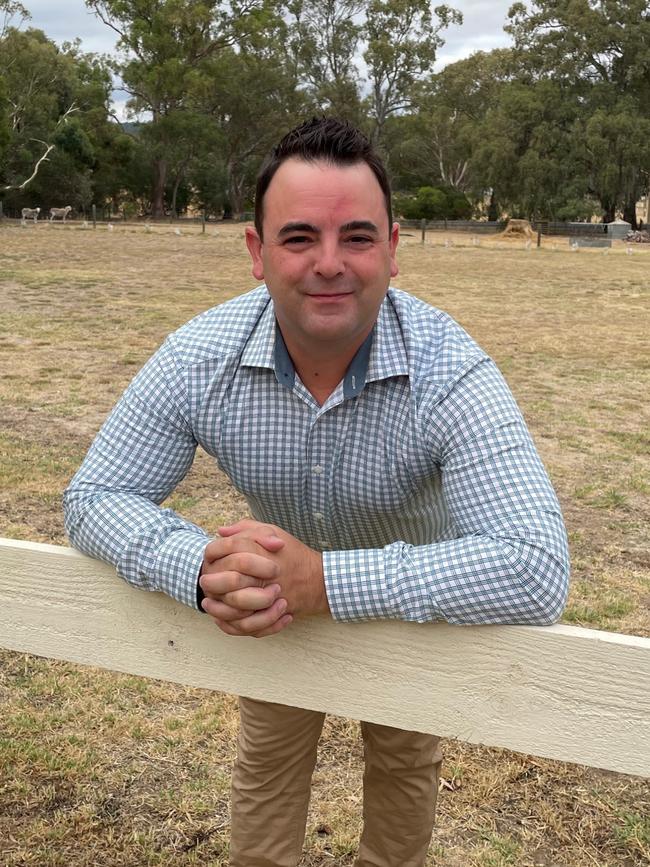
“We’ve sold our Merino wether lambs, normally we’d do that in three to four months time, and we’re contemplating selling another mob of sheep because we just can’t feed them.”
Keith has recorded just 137mm of rainfall in the past six months, compared to its mean of 271.1mm, according to Bureau of Meteorology data.
Mr Hannemann says the stress of feeding livestock is playing a part in selling livestock.
“There’s an old saying ‘a sense of humour runs out a lot earlier than the haystack does’,” Mr Hannemann, a second generation farmer, says.
“When you go out everyday on the tractor, feeding gets to you so we’re erring on the side of safety.”
Mr Hannemann says Premier Peter Malinauskas must acknowledge the conditions facing farmers.
“It would go a long way for people’s morale,” he says.
“There’s an old saying SA finishes at the toll gate and that’s how we’re feeling at the moment.
“It would be great to have him for a barbecue at Keith to meet some of the farmers.”
Earlier this month, a PIRSA Limestone Coast drought round table agreed the government needed clearer messaging on how drought is defined and the support available.
It follows large parts of the South-East, traditionally the wettest region of SA, experiencing its driest six months on record from February to July, since records began in 1900.
Livestock SA chief executive Travis Tobin says farmers are familiar with adversity, but the conditions are testing the resilience of even the most successful farming operations.
Grain Producers SA chief executive Brad Perry says growers in the mid and upper north of the state are having a particularly challenging year, some of whom will not harvest a crop.
“Everyone has been affected, but through the mid and upper north around the Goyder line this year has been particularly harsh,” he says.
“Then the big frost came through, affecting entire cropping regions.
“The other challenge is some farmers haven’t had a crop emerge, so some won’t be able to get seed back because they didn’t have that emergence.
“I feel like back in the 2018/19 drought we knew it was coming but this one, despite it being dry, has crept up on us because most were hoping for the forecasted wet spring.”
Mr Perry says despite the tough conditions their annual survey of 4500 growers shows a majority feel more financially prepared for a drought than in 2018-19.
Sixth generation Freeling grain producer Corbin Schuster says just 170mm of rain has fallen on his farm this year – the lowest since records began at the Freeling Post Office in 1880.
“1967 was the old yardstick for the bad seasons, which only had 230mm for the year, and we’re still way short of that,” Mr Schuster says.
“Farmers nowadays have become a specialised line of work and so many of the farmers suffering now have done everything right – the only thing that’s gone wrong is the weather which they can’t control.”
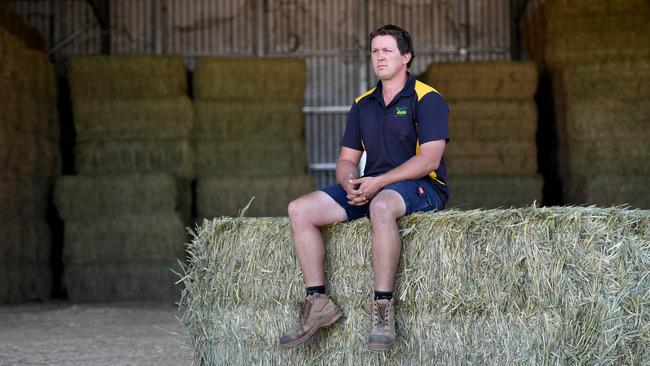
While the grape harvest is still a few months away, frost events earlier this month have devastated vineyards in the Barossa Valley, Clare Valley, Riverland and Padthaway.
Growers in the Riverland – Australia’s largest grape growing region – were already enduring some of the lowest prices on record for their fruit and toughest operating conditions.
Riverland Wine grape grower chair Ash Ratcliff says satellite images taken pre and post frost show 52 per cent, or half of all blocks in the Riverland, are frost-affected.
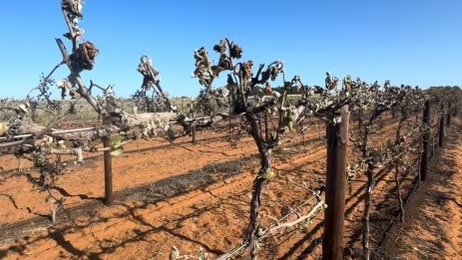
“We don’t know what the damage will be, but it will be significant,” Mr Ratcliff says. “It could be anywhere from 100,000 to 180,000 tonnes of fruit lost, we just don’t know.
“I’ve been growing grapes for well over 30 years and I don’t remember an event like this.
“Four years ago we had a hailstorm and our business lost $500,000, so I’d hate to think what we’ve lost with a frost of this magnitude.”
Mr Ratcliff says the loss of tourism in the Riverland due to the 2022/23 floods was $180m but he estimates frost damage across the state’s grape growing regions will exceed that.
“My gut feel is this will be a bigger natural disaster than the floods,” he says.
“The issue is these vines will reshoot and be nice and green in a month’s time, so the visual reminder will be gone, but there will be no crop.”
In the dairy sector, the news of Beston’s voluntary administration last week, which employs 160 people across two factories, came as a shock to suppliers.
Known for its award-winning cheeses, milk and butter, the ASX-listed company attributed its financial difficulties to high energy costs and debt following Covid.
In March, it was carrying $69.1m in debt.
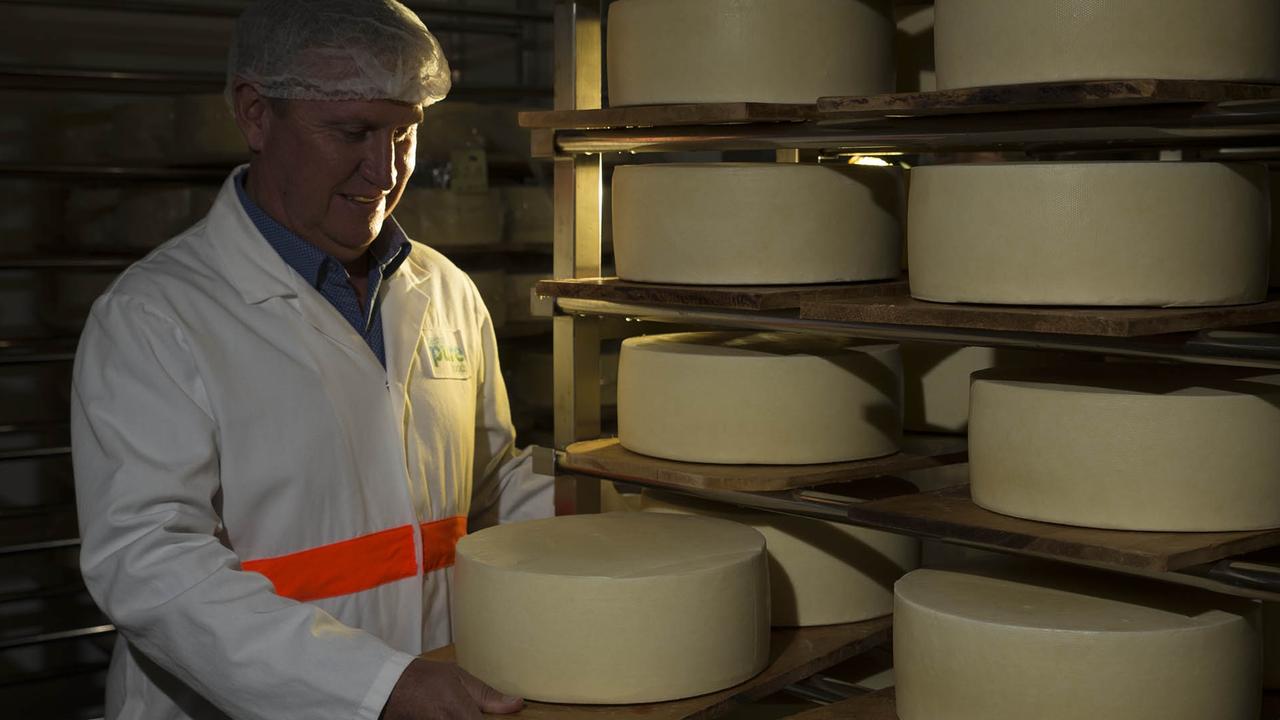
South Australian Dairyfarmers’ Association president Rob Brokenshire says they are hopeful of a takeover, after initial talks with a Japanese company fell through.
“It’s a good branded product and the mid and long-term future for dairy looks strong,” Mr Brokenshire says.
“Obviously, it will be tough for those 20 or so farmers affected, they’ve had input costs for producing the milk, it’s been sold in good faith and they rely on that income to pay their creditors.”
Allendale East farmer John Hunt has been supplying milk to Beston since its inception in 2015 and says he is “shocked and surprised” by the company’s demise.
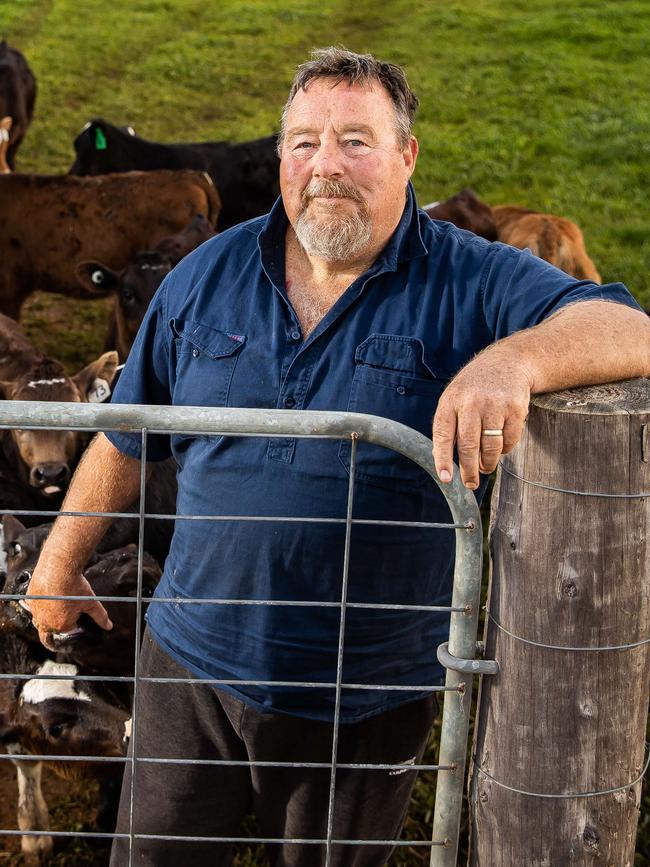
“The biggest thing that’s frustrated us is that they have a world-class facility, they have award-winning cheeses and their farmers are producing milk,” Mr Hunt says.
“What’s lacked is the management skills, the board has really let the farmers down. The only positive is that it was through no fault of our own.”
Mr Hunt says he is aware of farmers being owed between $300,000 to $1.2m, further compounded by high overdrafts because they haven’t been able to pay suppliers.
Meanwhile, tomato growers in Adelaide Plains are nervous their industry will be decimated after the detection of the tomato brown ruguse fruit virus at three farms.
Perfection Fresh was forcibly shutdown by the state government last week to protect the $230m industry, following the closures of Gawler River Tomatoes and SA Tomatoes.
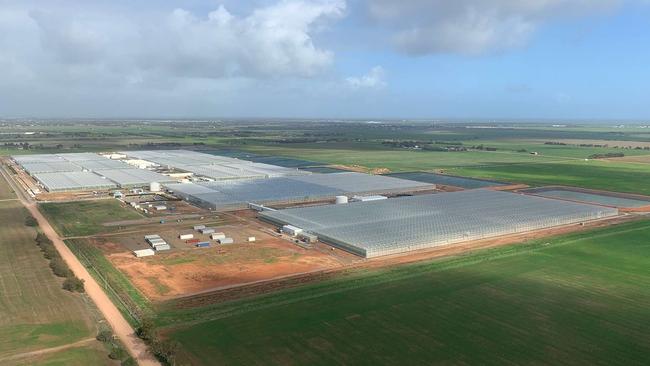
Hundreds of workers are now without an income as impacted growers dump their crop on the ground to stop the spread via infected seeds, plants and cuttings.
Da’Salvatore owner Tony Sacca is one of 18 growers to use SA Tomatoes to propagate their plants and are still waiting on final test results by PIRSA to determine if they have the virus.
“A week after the virus was announced (on August 14), they took about 300 (leaf) samples from our farm to be tested and we’re still waiting for results,” Mr Sacca says.
“We’re a small family-run farm and our main markets are closed and we’re also banned from NSW until we can prove we don’t have the infection.”
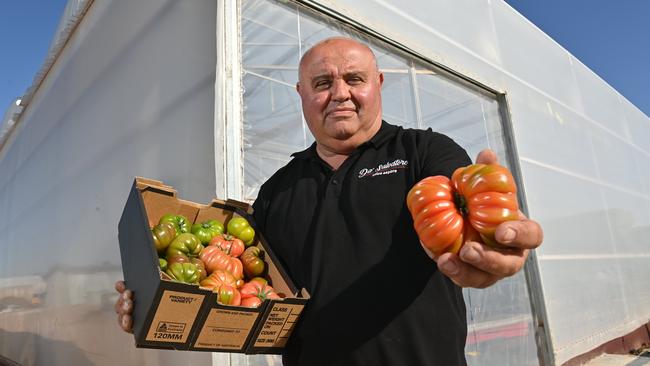
SA produces just over 30 per cent of the nation’s tomato supply year round and can supply 70-80 per cent to interstate markets at any one time.
Queensland and Western Australia have shut their borders to SA due to the outbreak, while NSW is heavily restricted.
Mr Sacca says as 90 per cent of his produce is destined for interstate, he ripped up 14,000 plants, meaning to replant and start again will cost him close to $60,000.
He says he is in talks with a lawyer over the “mismanagement” by PIRSA to handle the virus.
Primary Industries plant health and invasive species director Nick Secomb says the testing is based on international protocols, with two separate tests run for each sample.
“It is taking longer than we would hope because this is an exotic disease and when it came to us at the start of August there were only two accredited laboratories in Australia who are able to test with the confidence that we need,” Mr Secomb says.
He says the labs have been “overwhelmed” having now tested more than 3000 samples, with an infected farm only declared if a definitive result is returned on both testing samples.
“We completely hear what growers are saying, but we don’t want to take the alternative route where we do things too quickly or in a way that isn’t accepted by other states or markets or with the confidence that we need,” he says.
Grower, wholesaler and retailer Sage Mondello says farmers must overcome concerns that consumers will avoid tomatoes in fear of the virus – which is no risk to human health.
“When the virus was first in the media, it stopped tomato sales for five to 10 days … we were throwing them out and giving them to animals,” Mr Mondello says.
“The next concern we have are the border closures across Australia, as the SA population is too small for the volume we grow. A lot of growers are already pulling out their crops.”
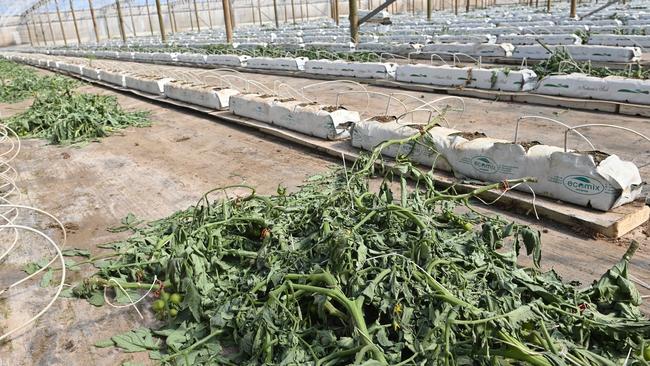

AusVeg SA chief executive Jordan Brooke-Barnett is cautious of putting a timeline on when the problem will be resolved.
“I’d like to say by Christmas but we just don’t know. We (the state) are in the unfortunate position of having this virus first and we have to demonstrate we can regulate it,” he says.
“The likely scenario we’re looking at is a national supply disruption, less pronounced in SA.”
SA Centre for Economic Studies executive director Michael O’Neil says given the challenges facing the agricultural sector there will be an economic decline, but “off a very high peak”.
“We’ve seen very strong growth in the sector – the output last year rose by seven per cent, in terms of volume and prices,” Prof O’Neil says.
“The regions they have had favourable climate and export conditions, except of course wine.
“Now the significant issue is the change in weather, we haven’t had the rainfall that will give us the boost in volumes of agricultural output, particularly broadacre crops.
“There will be a slightly lower output in gross product and export performance, but it’s all on the back of a very positive last decade where we’ve had the good weather.”
More Coverage
Originally published as SA farmers facing unprecedented challenges are calling on the state government for help





